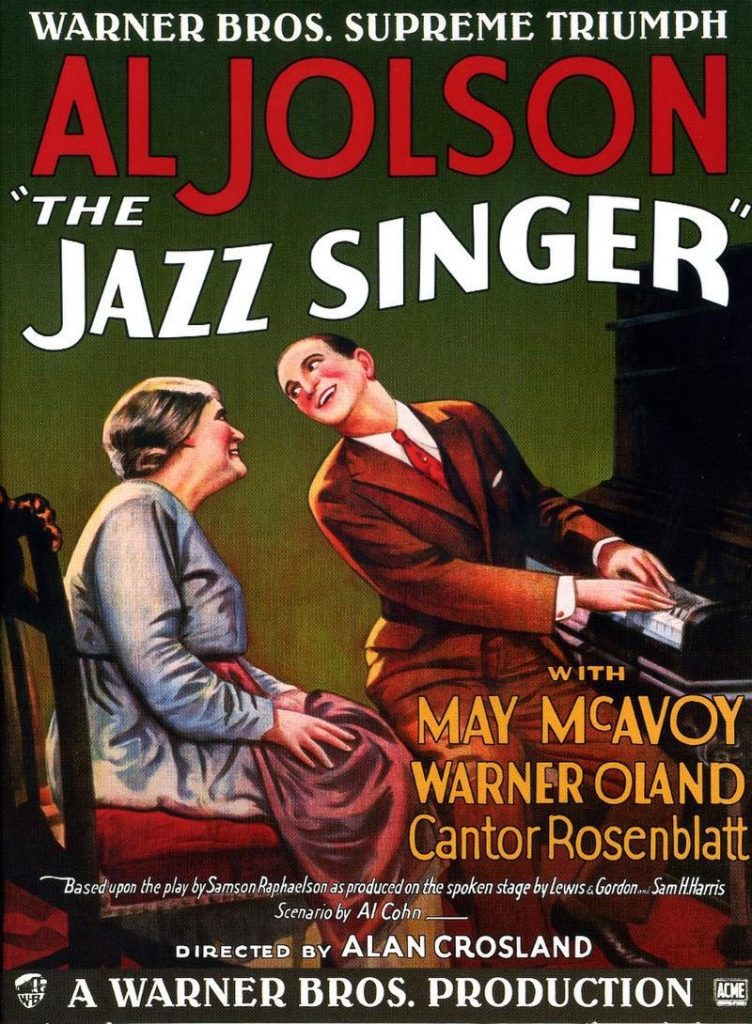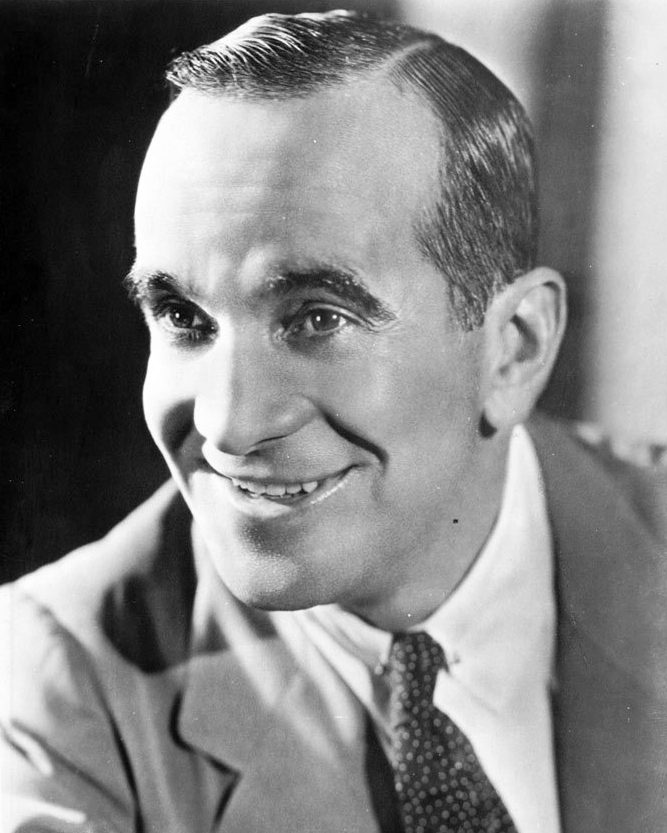

FROM WIKIPEDIA COMMONS
Al Jolson (born Asa Yoelson; May 26, 1886 – October 23, 1950) was an American singer, comedian, actor, and vaudevillian. Self-billed as “The World’s Greatest Entertainer”, Jolson is credited with being America’s most famous and highest-paid star of the 1920s. He was known for his “shamelessly sentimental, melodramatic approach”, and for popularizing many of the songs he performed. Jolson has been referred to by modern critics as “the king of blackface performers”.
Although best remembered today as the star of the first talking picture, The Jazz Singer (1927), he starred in a series of successful musical films during the 1930s. After the attack on Pearl Harbor in December 1941, he was the first star to entertain troops overseas during World War II. After a period of inactivity, his stardom returned with The Jolson Story (1946), in which Larry Parks played Jolson, with the singer dubbing for Parks. The formula was repeated in a sequel, Jolson Sings Again (1949). In 1950, he again became the first star to entertain GIs on active service in the Korean War, performing 42 shows in 16 days. He died weeks after returning to the U.S., partly owing to the physical exhaustion from the performance schedule. Defense Secretary George Marshall posthumously awarded him the Medal for Merit.
According to music historian Larry Stempel, “No one had heard anything quite like it before on Broadway.” Stephen Banfield wrote that Jolson’s style was “arguably the single most important factor in defining the modern musical”.
With his dynamic style of singing jazz and blues, he became widely successful by extracting traditionally African-American music and popularizing it for white American audiences who were otherwise not receptive to the originators. Despite his promotion and perpetuation of black stereotypes, his work was often well-regarded by black publications and he has been credited for fighting against black discrimination on Broadway as early as 1911. In an essay written in 2000, music critic Ted Gioia remarked, “If blackface has its shameful poster boy, it is Al Jolson”, showcasing Jolson’s complex legacy in American society.
TODAY’S ALMANAC
1780s
1790s
1820s
1840s
1850s
1870s
1880s
1890s
1900s
1910s
1920s
- BORN 1925: SHANA ALEXANDER (JOURNALIST)
- 1926: BABE RUTH HIT 3 HOME RUNS IN WORLD SERIES GAME
- 1927: PREMIERE OF THE JAZZ SINGER, THE FIRST FEATURE TALKING PICTURE, WHICH STARRED AL JOLSON
1950s
1960s
- 1962: JOSEPH CHARLES BEGAN 30 YEARS OF WAVING TO MOTORISTS IN BERKELEY, CA
- BORN 1963: ELISABETH SHUE (ACTRESS)
- 1969: GREATER WINNIPEG FLOODWAY (DUFF’S DITCH) COMPLETED, MANITOBA
1970s
1980s
2000s
- 2004: A MAGNITUDE 2.0 EARTHQUAKE REGISTERED 15 MILES EAST OF KEENE, NH
- 2009: CHARLES K. KAO, WILLARD S. BOYLE, AND GEORGE E. SMITH WON THE NOBEL PRIZE IN PHYSICS FOR THEIR CONTRIBUTIONS TOWARD FIBER OPTICS AND DIGITAL PHOTOGRAPHY.KAO, OF STANDARD TELECOMMUNICATION LABORATORIES IN HARLOW, UK, AND CHINESE UNIVERSITY OF HONG KONG, WON HALF THE PRIZE FOR “GROUNDBREAKING ACHIEVEMENTS CONCERNING THE TRANSMISSION OF LIGHT IN FIBERS FOR OPTICAL COMMUNICATION. . . . [IN 1966] HE CAREFULLY CALCULATED HOW TO TRANSMIT LIGHT OVER LONG DISTANCES VIA OPTICAL GLASS FIBERS. WITH A FIBER OF PUREST GLASS IT WOULD BE POSSIBLE TO TRANSMIT LIGHT SIGNALS OVER 100 KILOMETERS, COMPARED TO ONLY 20 METERS FOR THE FIBERS AVAILABLE IN THE 1960S.” BOYLE AND SMITH, BOTH FROM BELL LABORATORIES IN MURRAY HILL, N.J., SHARED THE OTHER HALF OF THE PRIZE “FOR THE INVENTION OF AN IMAGING SEMICONDUCTOR CIRCUIT – THE CCD SENSOR. . . . THE CCD IS THE DIGITAL CAMERA’S ELECTRONIC EYE. IT REVOLUTIONIZED PHOTOGRAPHY, AS LIGHT COULD NOW BE CAPTURED ELECTRONICALLY INSTEAD OF ON FILM.”
2010s
- 2012: 249 COMBINES REAPED 200 ACRES OF OATS IN ABOUT 12 MINUTES, IN DALMENY, SASKATCHEWAN
- 2015: TAKAAKI KAJITA OF JAPAN AND ARTHUR MCDONALD OF CANADA WON THE NOBEL PRIZE IN PHYSICS FOR THEIR WORK ON NEUTRINOS
2020s
COURTESY www.almanac.com

I’ve been absent for some time, but now I remember why I used to love this website. Thanks , I¦ll try and check back more frequently. How frequently you update your website?